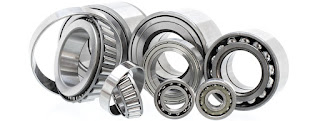Three Important Types of Roller Thrust Bearings
Designed to support axial load, a thrust bearing is a type of rotary bearing that rotates between parts reducing friction. A variety of bearing styles are available today in thrust configurations. Most thrust bearings have raceways machined into the faces of mating rings, and their arrangement supports a load that is parallel to the bearing axis.
Tapered rollers, balls, cylindrical rollers, needle rollers and spherical rollers are a few of the most common rolling elements that are most frequently used for thrust applications. Retainers or retainers are almost always utilized to maintain uniform roller spacing and loading.
Major types of roller thrust bearings include:
- Tapered Roller Thrust Bearings: The angle created between the line of contact between the raceway, the bearing axis and the tapered roller determines the level of thrust this bearing would be able to accommodate. In case the angle is greater than 45°, then the bearing would be well suited for axial loads. As the angle between the bearing axis and roller axis reaches 90°, the bearing can only sustain axial loads. These bearings need a cage, and at times, a flange, in order to retain the roller assembly.
- Cylindrical Roller Thrust Bearings: Such a type of bearing fans the cylindrical rollers around the bearing axis in a radial, perpendicular manner. These rollers can be end-relieved or crowned for reducing stress between the rollers and the outer wall of the house washer raceway. Coming also in double row variations, cylindrical roller thrust bearing do not need much axial space in order to be deployed. They are not recommended for a radial load while being suitable enough for substantial axial loads.
- Spherical Roller Thrust Bearings: Rolling elements are barrel-shaped, and have raceways that resemble the cone-and-cup design resembling found in typical standard tapered roller bearings. This offers the bearings its self-aligning capabilities that come as a huge advantage in applications where shock loads or shaft deflection can occur. They can tolerate moderate radial loads and support heavy axial thrust in one direction. Much like tapered roller thrust bearings, the angle between the bearing axis and the roller axis determines the ratio of axial/radial loading.
More details on roller thrust bearing can be found on the web.



.jpg)
Comments
Post a Comment